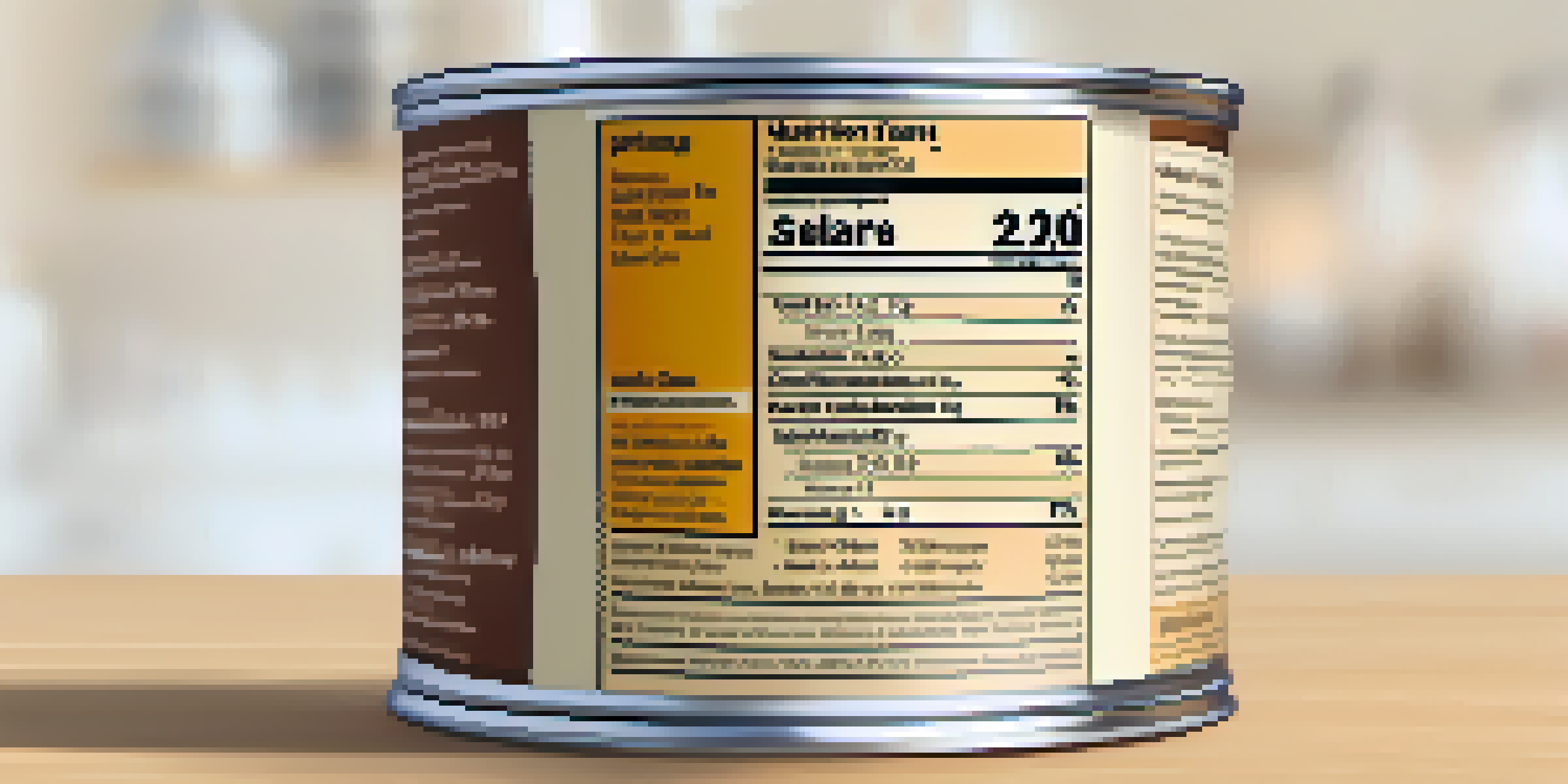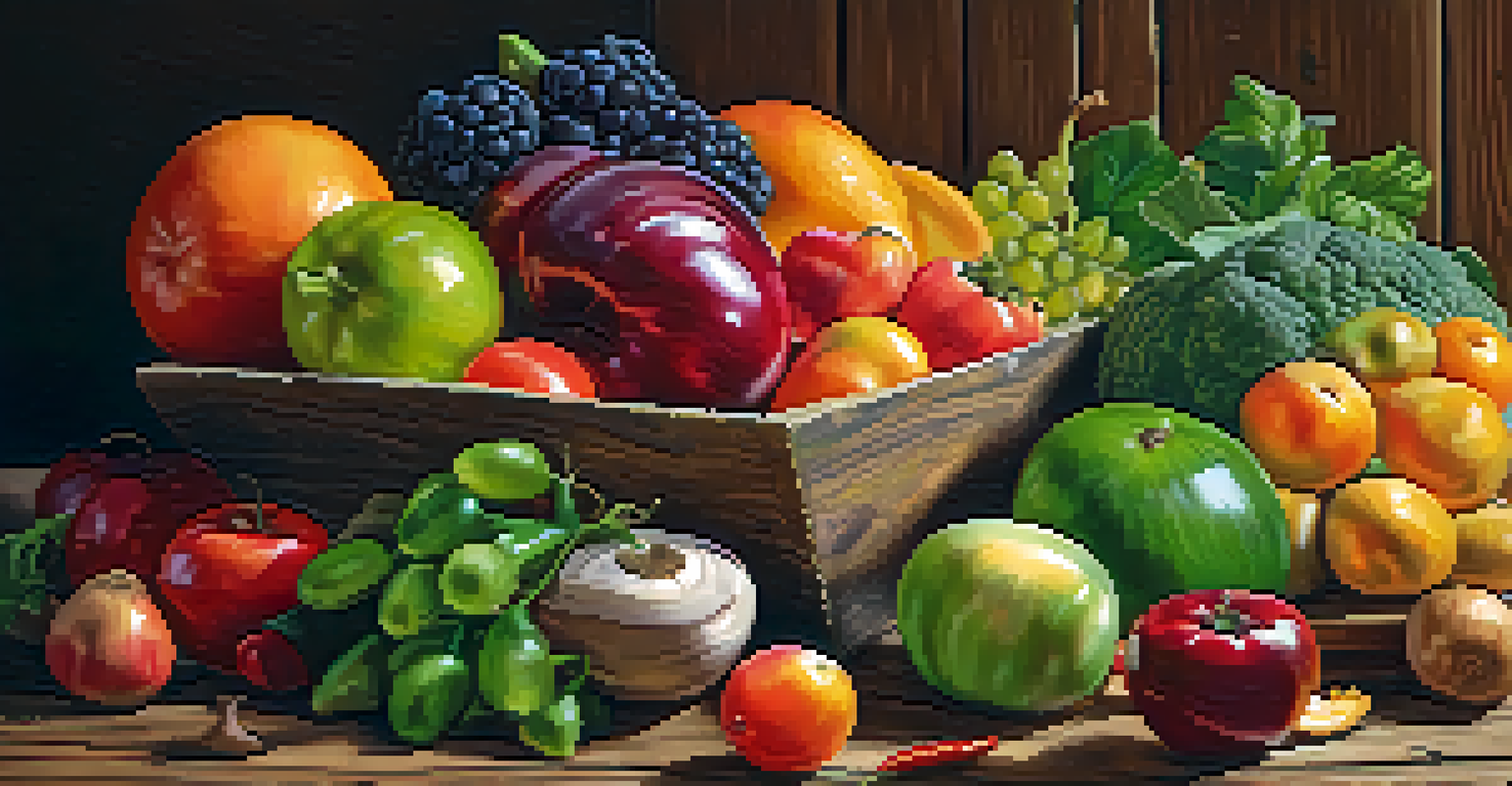How to Read Nutrition Labels for Vegan Diet Success

Understanding the Basics of Nutrition Labels
Nutrition labels can seem overwhelming at first glance, but they provide essential information about the food we consume. Each label typically includes details on serving size, calories, and nutrient breakdowns. Familiarizing yourself with these components is the first step to making informed dietary choices.
Let food be thy medicine and medicine be thy food.
The serving size is crucial; it sets the standard for all the nutritional information that follows. For instance, if you consume double the serving size, you’ll need to double the calories and other nutrients listed, which can quickly add up. Always keep this in mind when evaluating how a product fits into your daily diet.
As you start reading these labels, remember that the ingredients list is as important as the nutrition facts. This list reveals what’s actually in the product, helping you avoid unwanted additives or non-vegan ingredients. Understanding what to look for can empower you to make better choices aligned with your vegan lifestyle.
Decoding Serving Sizes for Accurate Tracking
Serving sizes can often be misleading, especially in packaged foods that might contain multiple servings. For example, a snack bag may appear small, but it could hold several servings, which can lead to unintentional overconsumption. Pay close attention to this detail to accurately track your intake.

To make it easier, try using a measuring cup or kitchen scale when you first start tracking your food. This way, you can visualize what a serving actually looks like, making it simpler to compare it to the serving size listed on the label. With practice, you’ll develop a more intuitive understanding of portion sizes.
Master Nutrition Labels for Health
Understanding nutrition labels helps you make informed dietary choices by recognizing serving sizes, nutrients, and ingredients.
It’s also helpful to note that not all foods are created equal regarding serving sizes. For instance, one serving of nuts may seem small, but it’s calorie-dense. Balancing your servings with other lower-calorie vegan foods can help maintain a well-rounded diet without compromising your health goals.
Identifying Key Nutrients for Vegan Dieters
When following a vegan diet, certain nutrients become particularly important to monitor, such as protein, iron, calcium, and B12. These nutrients are crucial for maintaining energy levels and overall health, and they may be less abundant in plant-based foods. Understanding how to identify them on nutrition labels can help you avoid deficiencies.
You are what you eat, so don’t be fast, cheap, easy, or fake.
Look for products that are fortified with essential vitamins and minerals, especially B12, which is primarily found in animal products. Many plant-based milks, cereals, and nutritional yeast products are fortified, making them excellent additions to your diet. Checking labels for these nutrients can help ensure you’re getting what you need.
Additionally, don’t forget to pay attention to protein sources. While many plant-based foods contain protein, they often lack one or more essential amino acids. Combining different sources, like beans and rice, can create a complete protein profile, so having a variety of options in your meals is key.
Recognizing Hidden Sugars and Additives
Sugar can sneak into many packaged vegan products, often under different names like sucrose, glucose, or agave nectar. It's essential to recognize these hidden sugars to avoid consuming more than you realize. A high sugar intake can lead to energy crashes and other health issues, so being vigilant is vital.
Start by checking the total sugars listed on the label, then look at the ingredients list for any sugar-related terms. If sugar appears near the top of that list, the product is likely high in sugar. Opt for products with little to no added sugars to maintain a healthier diet.
Identify Key Nutrients for Vegans
Focusing on essential nutrients like protein, iron, and B12 is crucial for maintaining health while following a vegan diet.
Moreover, be wary of additives and preservatives that may not align with your dietary values. Ingredients like artificial flavors or colors can be common in processed foods. By choosing whole, minimally processed foods whenever possible, you'll not only avoid these additives but also benefit from a more nutrient-dense diet.
Evaluating Fats: Good vs. Bad Choices
Fats are another crucial component to consider when reading nutrition labels. Not all fats are created equal; understanding the difference between saturated, unsaturated, and trans fats can help you make healthier choices. Aim to consume healthy fats from sources like avocados, nuts, and seeds while limiting saturated and trans fats.
When looking at the label, check the total fat content and see how much of it comes from saturated fats. Ideally, you want to keep saturated fats low, as they can contribute to heart-related issues over time. However, unsaturated fats, such as omega-3 fatty acids found in flaxseeds, are beneficial for your overall health.
Also, consider the serving size when evaluating fat content. A product may have a low amount of fat per serving, but if you consume multiple servings, those fats can add up quickly. Being mindful of both the quantity and quality of fats in your diet is key to nurturing your body well.
Understanding Fiber and Its Importance
Fiber is a superstar in the world of nutrition, especially for those on a vegan diet. It aids digestion, helps maintain a healthy weight, and keeps you feeling full longer. As you read nutrition labels, look for foods that are high in dietary fiber to boost these health benefits.
The daily recommended intake of fiber is about 25 grams for women and 38 grams for men. Many vegan foods, such as beans, whole grains, fruits, and vegetables, are excellent sources of fiber. However, not all packaged foods are created equal, so checking the nutrition label can help you find the best options.
Compare Products for Better Choices
Comparing similar food items side-by-side allows you to uncover hidden differences and select the healthiest options for your vegan lifestyle.
When evaluating fiber content, aim for products that provide at least 3 grams of fiber per serving. This amount can significantly contribute to your daily intake. By prioritizing high-fiber foods, you’ll not only support your digestive health but also enjoy a more satisfying diet overall.
Making Informed Choices with Label Comparisons
Once you’ve become familiar with reading nutrition labels, it’s time to put that knowledge to use by comparing products. When shopping, always compare similar items side-by-side to find the healthiest option. This practice can help you uncover hidden differences that might affect your vegan diet.
For instance, if you’re choosing between two different brands of plant-based milk, look closely at the protein content, added sugars, and fortification. Sometimes, one brand may offer significantly more nutrients than another, making it a smarter choice for your diet. This critical comparison can help you make better decisions.

Moreover, don’t hesitate to ask questions or seek guidance from store employees if you’re uncertain about a product. Many health food stores have knowledgeable staff who can assist you in finding the right choices for your vegan lifestyle. By being proactive and informed, you'll enhance your shopping experience and your dietary success.